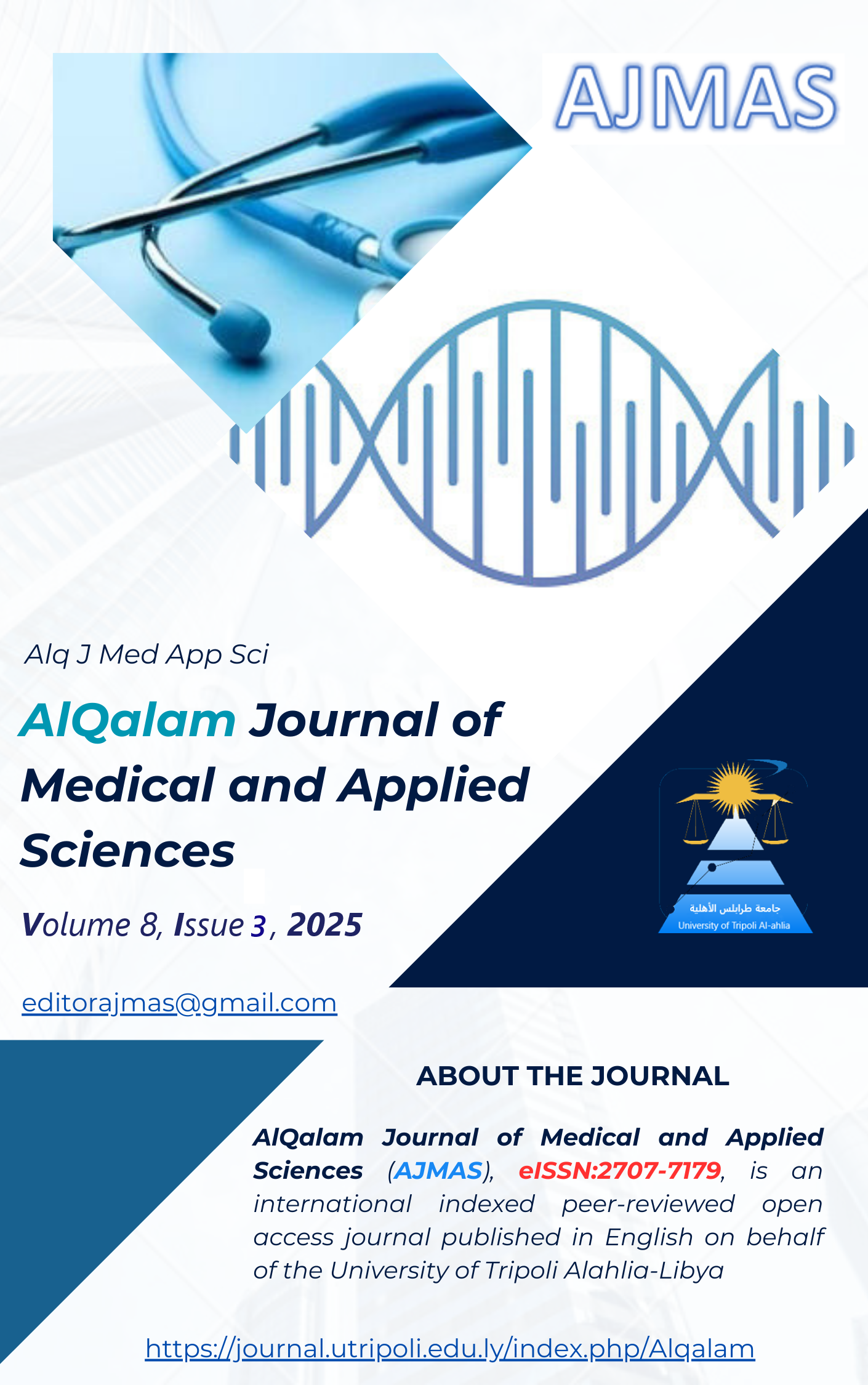Preference for Using Rotary Endodontic Instruments Among Endodontists and General Practitioners in Tripoli, Libya
DOI:
https://doi.org/10.54361/ajmas.258323Keywords:
Rotary Instruments, Hand Instruments, Endodontists, General Practitioners.Abstract
Nickel-titanium (NiTi) rotary instruments have revolutionized root canal treatments by enhancing efficiency, accuracy, and patient outcomes. Despite their advantages, there is limited evidence explaining the factors influencing the adoption of nickel-titanium (NiTi) rotary instruments among general practitioners and endodontists in Tripoli, Libya. This study aimed to investigate the usage patterns, influencing factors, and practitioner perceptions regarding rotary versus hand instrumentation during root canal treatment among dentists in Tripoli, Libya. A cross-sectional, questionnaire-based survey was randomly distributed to 300 general dental practitioners and endodontists practicing in both public and private dental centers in Tripoli, Libya. The questionnaire comprised 12 structured items addressing participants’ demographic profiles, professional designations, clinical experience with rotary instrumentation, preferred file systems, and key factors influencing instrument selection. Data collection was conducted through both manual distribution and electronic dissemination via online platforms. Descriptive statistics, including frequencies, percentages, means, and standard deviations, were calculated. Data analysis was performed using SPSS version 25.0, with a significance level set at p < 0.05. The survey revealed that the clinical preference for endodontic instrumentation among Libyan dental professionals is significantly influenced by the type of clinical setting. Rotary systems were more frequently utilized in private clinics, whereas hand instrumentation remained predominant in public healthcare centers. University and hospital environments tended to adopt a blended approach, integrating both techniques. Neither gender nor level of specialization demonstrated a statistically significant association with the type of instrumentation selected. However, practitioner training and case complexity emerged as the primary determinants influencing instrument choice. Cost sensitivity was notably higher among endodontists compared to general practitioners. Among the file systems used, E. Flex was the most widely adopted overall. Endodontists showed a clear preference for the T.Pro system, while other specialists more commonly selected ProTaper files.
Downloads
Published
How to Cite
Issue
Section
License
Copyright (c) 2025 Rabia Daaeki, Ahmed Nouha, Sumaya Aghila

This work is licensed under a Creative Commons Attribution 4.0 International License.















